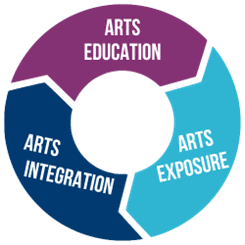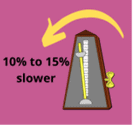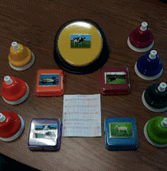NAfME BLOG
Using a Comprehensive Arts Education Model to Meet the Needs of Neurodiverse Students in Arts Education
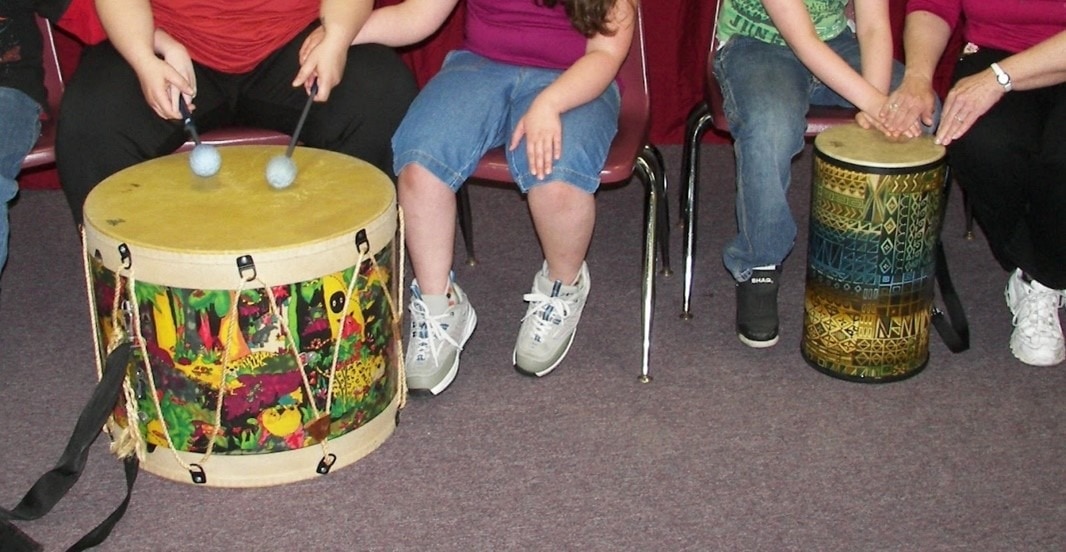
/ News Posts / Using a Comprehensive Arts Education Model to Meet the Needs of Neurodiverse Students in Arts Education
Using a Comprehensive Arts Education Model to Meet the Needs of Neurodiverse Students in Arts Education
By NAfME Members Brandon Roeder and Eve Snyder
Presented Using a Comprehensive Arts Education Model to Meet the Needs of Neurodiverse Students in Arts Education at the “NAfME is ME!” 2022 NAfME National Conference in National Harbor, Maryland.
All students deserve to have access to high-quality arts instruction, which includes ensuring that our Exceptional Children (those in special education) are able to participate in Visual Art, Dance, Theatre, and Music programs. Ensuring that all students are included in arts education requires that we prepare our arts educators and equip them with the tools necessary to support the needs of their students. Using North Carolina’s Comprehensive Arts Education Framework, we are excited to share the ways that we provide wrap-around services for students in arts education, arts integration, and arts exposure. Our session at the 2022 NAfME National Conference will help music educators understand why meeting the needs of these students is important, how creating sensory-friendly performance environments meets the needs of neurodiverse community members, and how teachers in the field are supporting neurodiverse students in North Carolina. The session includes hands-on interaction with adapted materials as well as an in-depth look at how the NC Symphony supported their neurodiverse community members in concert.
Comprehensive Arts Education
In 2010, the North Carolina S66 Task Force recognized a Comprehensive Arts Education Plan to include the following components:
- Arts Education (arts as core, academic subjects)
- Arts Integration (arts as a catalyst for learning across the curriculum)
- Arts Exposure (exposure to arts experiences)
See the NCDPI Comprehensive Arts Education Guide for more information.
If we know that the arts are necessary for all students, why do some get left out then? Arts Access Inc, a Raleigh-based organization focusing on making the arts accessible to people with disabilities, partnered with the Wake County School system to determine the answer to this question. Survey participants identified the following barriers (listed in order of frequency) to participation in the arts by children and youth with disabilities:
- lack of training and knowledge for arts educators;
- lack of information about what is available;
- art instruction not adapted for needs related to disability;
- lack of transportation;
- student’s inability to keep up with the activity; and
- lack of willingness for inclusion.
It is imperative, then, that teachers, parents, arts organizations, and performance groups work together to provide services to include students with disabilities and their families. As a sneak peak into our session (Friday, November 4 at 4:15 in National Harbor 8), Eve Snyder, music educator at the Bonnie Springer School on the campus of the Murdoch Developmental Center in Butner, North Carolina, will share a few tools we’ll be showcasing in the session!
Arts Education Tools for ALL Students
Making music class activities more accessible is all about getting to know your students and providing the tools that students need to be successful. Building relationships with your neurodiverse students is as easy as learning what is important to, and important for them: What kind of supports do they need? What genres of music do they respond to? What are their musical strengths?
Tools for Creating and Presenting Music
Finding the music notation system that resonates with your neurodiverse musicians can boost their music literacy progress as well as their self-esteem. Be sure to consider those who might have color vision deficiency as well!
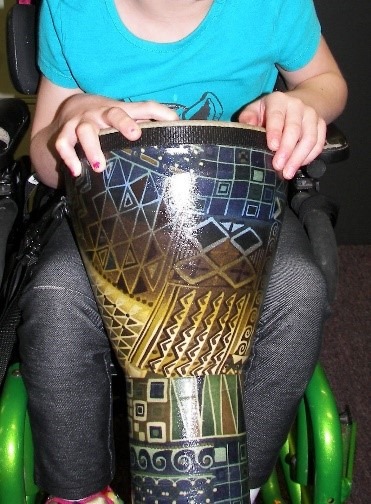 Fine motor skills are a challenge for many neurodiverse students. Instruments that instantly harmonize with the ensemble or that are easy for students to reach and hold will help maintain engagement as well as self-regulation.
Fine motor skills are a challenge for many neurodiverse students. Instruments that instantly harmonize with the ensemble or that are easy for students to reach and hold will help maintain engagement as well as self-regulation.
Pincer grips and closed fists can be difficult to manage for students with limited mobility. Modified accessories enhance accessibility and support independence.
Some neurodiverse students will come to music class with their own staff buddies to partner with. Otherwise, assign partners whom you’ve observed as being patient, pleasant, and inclusive in the music room.
Modeling and prompting are essential in an inclusive classroom. Asking students, “May I help you?” or “May I show you?” gives students who are hesitant a chance to sense the movement and sounds involved. It also gives them a voice to choose to observe until they are comfortable enough to participate.
Tools for Responding to Music
Sometimes accompaniments are too fast for neurodiverse and neurotypical students alike. Audio tracks and play along videos can be made more accessible just by slowing the tempo by 10%.
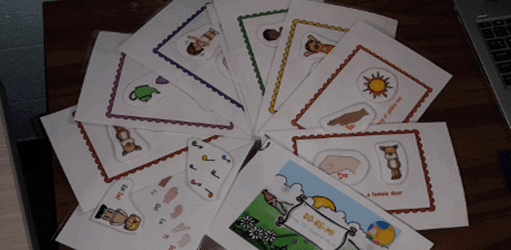 Providing an adapted book with hook and loop icons for matching can help some students remember song lyrics and remain engaged.
Providing an adapted book with hook and loop icons for matching can help some students remember song lyrics and remain engaged.
Communication boards and switches give the power of speech, song, and participation to your nonverbal music students. Get to know the devices that your students are trained on, then ask for training on them yourself so you can program them for use in your lessons.
Tools for Connecting with Music
Contextual relevancy can be so much more meaningful when students see themselves represented in the multimedia resources used in the music room. Allowing time for in-class performance anxiety exercises will teach self-regulation skills that will influence positive behaviors both during and after music class.
Including neurodiverse students in school-based music activities, ensembles, and classes is absolutely doable. Join us at the session to experience how you can make it happen in your district!
See also “Developing Teachers to Advance Multilingual Learners in Music Education” by Brandon Roeder.
About the authors:
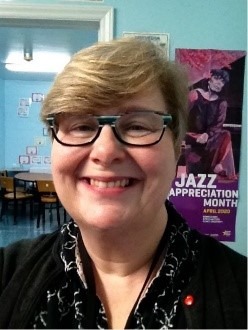 NAfME member Evelyn Snyder is the music educator at the Bonnie Springer School on the campus of the Murdoch Developmental Center in Butner, North Carolina. She teaches K–8 general music, as well as 9–12 music appreciation, instrumental ensembles, and private lessons to students with intellectual and developmental disabilities paired with behavioral challenges and/or mental illness. Evelyn is a member of the North Carolina Music Educators Association (NCMEA), the National Association for Music Education (NAfME), and the American String Teachers Association (ASTA). Evelyn holds a Bachelor of Music in violin performance from UNC-Greensboro and received a Fulbright Grant to attend Ludwig Maximilians Universität in Munich, Germany. She is currently pursuing a Master of Education in Instructional Technology at East Carolina University. She can be reached at evelyn.snyder@dhhs.nc.gov.
NAfME member Evelyn Snyder is the music educator at the Bonnie Springer School on the campus of the Murdoch Developmental Center in Butner, North Carolina. She teaches K–8 general music, as well as 9–12 music appreciation, instrumental ensembles, and private lessons to students with intellectual and developmental disabilities paired with behavioral challenges and/or mental illness. Evelyn is a member of the North Carolina Music Educators Association (NCMEA), the National Association for Music Education (NAfME), and the American String Teachers Association (ASTA). Evelyn holds a Bachelor of Music in violin performance from UNC-Greensboro and received a Fulbright Grant to attend Ludwig Maximilians Universität in Munich, Germany. She is currently pursuing a Master of Education in Instructional Technology at East Carolina University. She can be reached at evelyn.snyder@dhhs.nc.gov.
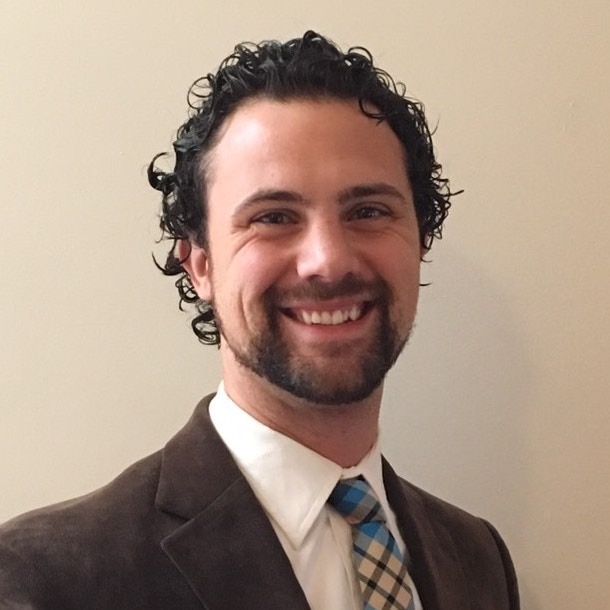 Now at NC DPI as the K–12 Music and Theatre Arts Consultant, NAfME member Brandon Roeder came to North Carolina in 2009 to teach elementary music in Granville County. Across ten years in the field, he has taught PK–5 music and high school chorus, coached and written music for marching bands and drumlines, put on numerous musical productions, ran an after-school strings program, in addition to being the Arts Integration Coordinator for his county for five years. Brandon completed his Master’s in Curriculum Specialist in 2019 from Appalachian State University. He is passionate about getting teachers the instructional support tools they need and loves to coach teachers and district leaders toward Advancing the Arts Programs in their districts. He can be reached at brandon.roeder@dpi.nc.gov.
Now at NC DPI as the K–12 Music and Theatre Arts Consultant, NAfME member Brandon Roeder came to North Carolina in 2009 to teach elementary music in Granville County. Across ten years in the field, he has taught PK–5 music and high school chorus, coached and written music for marching bands and drumlines, put on numerous musical productions, ran an after-school strings program, in addition to being the Arts Integration Coordinator for his county for five years. Brandon completed his Master’s in Curriculum Specialist in 2019 from Appalachian State University. He is passionate about getting teachers the instructional support tools they need and loves to coach teachers and district leaders toward Advancing the Arts Programs in their districts. He can be reached at brandon.roeder@dpi.nc.gov.
Did this blog spur new ideas for your music program? Share them on Amplify! Interested in reprinting this article? Please review the reprint guidelines.
The National Association for Music Education (NAfME) provides a number of forums for the sharing of information and opinion, including blogs and postings on our website, articles and columns in our magazines and journals, and postings to our Amplify member portal. Unless specifically noted, the views expressed in these media do not necessarily represent the policy or views of the Association, its officers, or its employees.
November 4, 2022. © National Association for Music Education (NAfME.org)
Published Date
November 4, 2022
Category
- Diversity, Equity, Inclusion, and Access (DEIA)
- Special Education
Copyright
November 4, 2022. © National Association for Music Education (NAfME.org)
